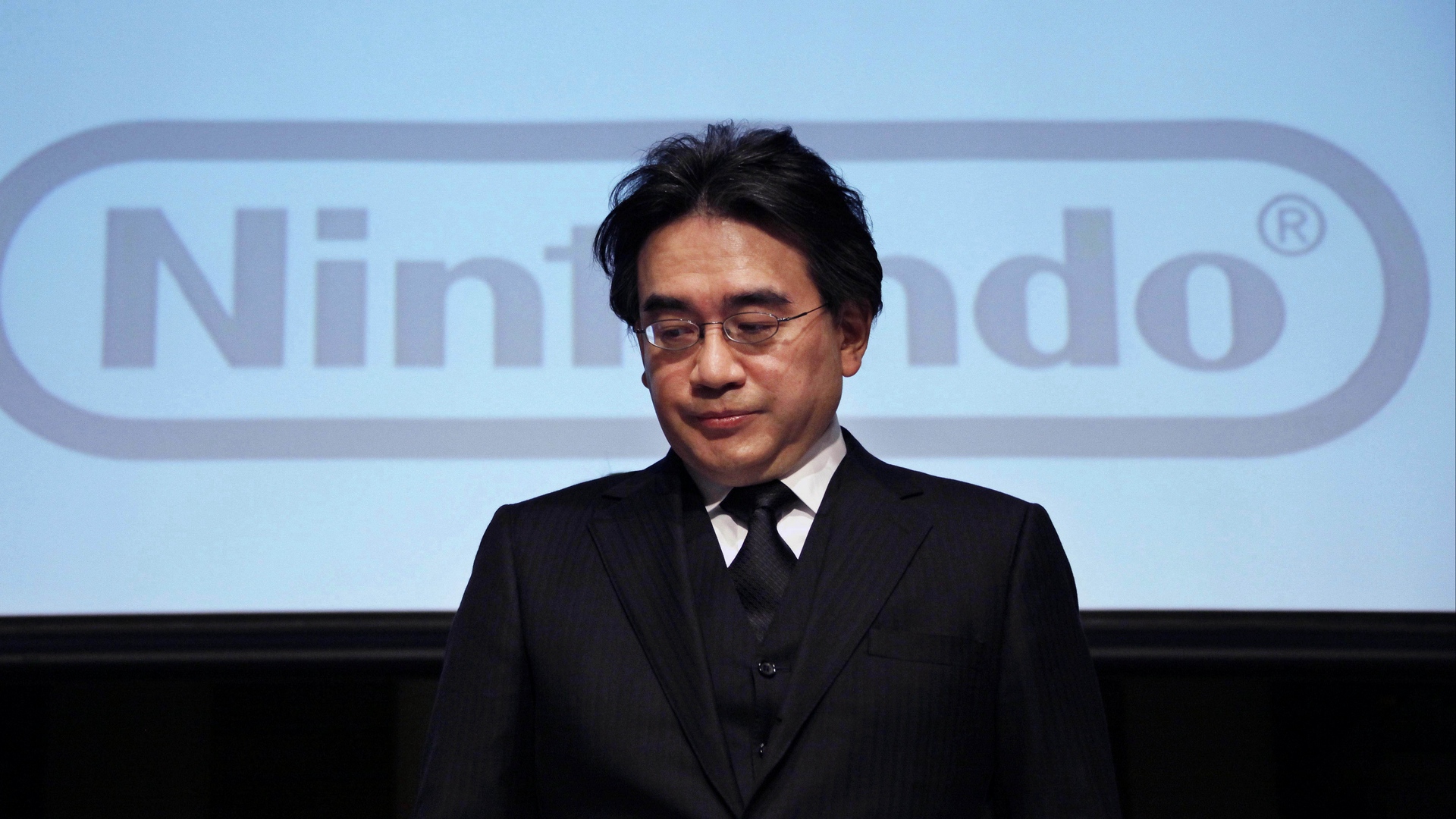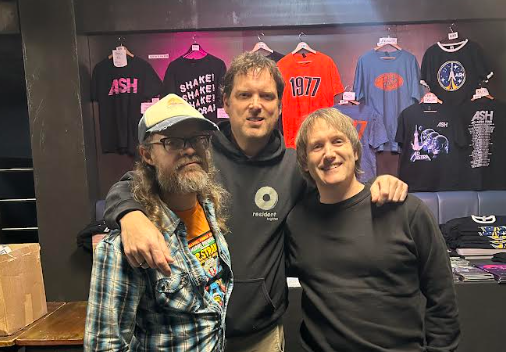By Mike O’Brien |
Mario is in your happy meal. Link is shield surfing his way onto Jimmy Fallon. You can’t escape it: Nintendo is back, and their latest console – the Nintendo Switch – commands our collective gaze. To those less entangled in the games industry and its happenings, it may seem like Nintendo have lied dormant in the decade since the Wii invaded your living room, and that their recent resurgence is business as usual. But despite their return to form, Nintendo’s era of public quiet was amok with commercial and critical peril. How could a name so titanic plummet from ubiquitous to endangered in such a short space of time, and how did this wounded army of treasured mascots reconquer its throne?
Mario and Link are not household names simply because of their commercial success – they represent games immortalised by their innovation. World 1-1 of Super Mario Bros (1985) is considered such a revolutionary primer of game design that even now it is the frequent subject of interviews, documentaries, and even academic analysis. The Legend of Zelda (1986) shattered contemporary understandings of scope and freedom in video games, single-handedly laying the infrastructure for the action-adventure games and RPGs of today. At a time when the games industry was seemingly destined for extinction due to market crashes and poor quality control, the craftsmanship of Nintendo games is oft-considered the saviour of the medium.┬á

The principle to create fun games which genuinely innovate is crucial to their success: whilst Nintendo may have competitors, their zany genius and unique identity afforded them their own corner of the market, one so far removed from conventional games development that no other could satisfy their niche. But however great its games may have been, Nintendo could not afford to live in a vacuum forever. Their insular mentality severed them from the standards and expectations of a dynamic industry, and their reluctance to play ball became their undoing. After the wildly successful Wii, its successor, the Wii U, landed on store shelves – and unlike Nintendo’s prior consoles, it stayed there.
Despite major divisions in Europe and North America, Nintendo remained centrally controlled by an old guard in Kyoto, and it was beginning to show. Their brand suffered a sharp decline into irrelevance, and Nintendo’s propensity to disregard convention made them look less like magical mavericks and more like arrogant Luddites forlornly resisting the tide of progress.
The Wii U epitomised this disastrous state of affairs. Its online capabilities were weak, not only lacking the speed and quality of its competitors, but also basic utilities that were commonplace by 2008. An insider told Eurogamer in 2014: ÔÇÿat some point in this conversation we were informed that it was no good referencing Live and PSN as nobody in [Nintendo’s] development teams used those systems’. The marketing was another area of weakness; unconvincing ads were catered exclusively to the family market, neglecting Nintendo’s core audience. Despite massive brand power and momentum from the Wii, it somehow failed to achieve significant public awareness. It was an unbelievable decline for the company whose mascot was once more famous than Mickey Mouse. Furthermore, the console’s main innovation – a companion tablet simply called the ÔÇÿWii U gamepad’ – was rarely utilised by developers, many of whom neglected to make Wii U games at all. Even Nintendo’s internal teams regularly failed to make good use of their own hardware. The dire situation compelled Nintendo President Satoru Iwata to slash his own salary in half, whilst other members on the directorial board voluntarily accepted paycuts of 20-30%.

These dark years eluded the attention of the everyday consumer, to whom Nintendo’s recent failures have probably seemed more like a sabbatical. For invested gamers though, the Wii U’s demise and subsequent abandonment led to a collective perception of Nintendo as a board of clueless Japanese elders who refused to venture beyond their Kyoto headquarters, sacrificing the needs of their most loyal fans in the process. Whatever they produced next would have to be supremely vindicating, something irresistible to both the everyman and the enthusiast. This was Nintendo’s last chance.
On October 2016, Nintendo’s most important effort yet was revealed to the world: the Nintendo Switch. To this day, its initial trailer remains the most potent message Nintendo have ever delivered. No cringeworthy scripted skits with nuclear families feigning excitement here – instead, a montage of the Nintendo Switch’s raw utility. Play it in handheld mode on the plane, then dock it at home to pick up right where you left off on the TV. Slide off the controllers and play with a friend anywhere, anytime. Super Mario Odyssey and Skyrim came as major announcements for first-party Nintendo maniacs and fans of multiplatform titles. To close the trailer, Nintendo even embraced the very same eSports they had threatened to eliminate just a few years prior.
The trailer was followed by months of carefully orchestrated hype, appearing everywhere from Jimmy Fallon, to the Super Bowl, to the Instagram accounts of just about every touring celebrity. Nintendo’s marketing evolved to communicate the clear message that regardless of demographic, the Switch is for everyone: there’s something here for the disenfranchised Nintendo fan, for the casual player with adult responsibilities, or for those just interested in a new party gimmick. And to top it off, it’s all wrapped up in a sleek system with remarkable convenience. Slick, classy, and maturer than ever, this is a brand new Nintendo: so how did it come about?

Their solution is almost frustratingly simple: more communication between Nintendo’s Kyoto headquarters and its international divisions. “The way that we make games has not fundamentally changed,” says Shinya Takahashi (Nintendo’s GM of development) to CNET. “Some small technical and organizational differences really can change the focus.” Furthermore, there’s new blood in Kyoto. The current president, Shuntaro Furakawa, is only 46 years old, and Nintendo’s old guard have voluntarily passed directorial responsibility onto younger members of staff at the company. Shigeru Miyamoto told Glixel: “we have these younger people in the company who are taking the lead on Switch development […] They’re the ones that have really shepherded it through.”
Both a dose of new blood and the revolutionary capacity to register criticism were invaluable – but there’s another piece to the puzzle. From 2002 to 2015, Nintendo’s presidency was held by Satoru Iwata. He famously said: “On my business card, I am a corporate president. In my mind, I am a game developer. But in my heart, I am a gamer” – and no quote could more aptly define the diversity of talents possessed by the former president. Many stories exist of his prowess. Even as president of the company, he would swoop into troubled studios and fix up doomed code by himself; if not for him, games like Super Smash Bros Melee and Pokemon Red and Green may have been very different. He was an instrumental part of the company, not only in his versatility but in his embodiment of Nintendo’s spirit: devoted, principled, and playful, he was willing to embrace the silly spectacles and paint a brighter world. And then, at just 55, cancer snatched him away.
Iwata’s passing was a source of widespread quiet and mourning at Nintendo – but even in spirit, he continued to motivate Nintendo. The Legend of Zelda: Breath of the Wild director Hidemaro Fujibayashi told The New Yorker: “When he passed away, there were moments we’d come up with an idea which we’d be excited to talk to Iwata about. Then we’d remember he was no longer here […] This is approaching spiritual talk, but we had the sense that he was watching over our work. That became a source of motivation, a drive for us to improve and be better.” The impact of Satoru Iwata’s death, whilst tragic, is a testament to the value of his life. It is Iwata’s achievement that the passing of a single man inspired his struggling company to rise above and survive by making something beautiful.

It worked. The Legend of Zelda: Breath of the Wild is one of the most critically acclaimed games of all time, sitting on an average score of 97 out of 100 on Metacritic. It was Nintendo’s first game for the Switch, and the harbinger of an incredible return to form. The only other game to receive such a high score that year was Super Mario Odyssey – yet another Nintendo Switch game. The momentum of Breath of the Wild’s success rolled on, and with support from major third-party players like Bethesda, Activision, and even Microsoft, the Switch is now an international success. And Nintendo are showing no signs of slowing down, either; many of their big franchises, like Pokemon, Animal Crossing, and Super Smash Bros haven’t even launched on the system yet.
The Switch is not perfect. Its online capabilities, whilst serviceable, are still unreliable and outdated – and soon Nintendo will start charging for it as well. With regards to third party support, it’s hard to say whether major developers – whose games are often pushing the brink of what consoles can handle – will continue to support the Switch with such weak hardware specifications. Echoes of the best-forgotten Wii U era continue to haunt Nintendo – but the progress they have made is undeniable. Their first party games are better than ever: Breath of the Wild, Mario Tennis Aces, Mario Kart 8 Deluxe, Splatoon 2, and Super Mario Odyssey are debatably the best games of their respective franchises. Instead of dumbing down gameplay for casual appeal a la the Wii/Wii U generations, Nintendo are once again making games which embrace the duality of being easy to pick up and play, but offer limitless potential for those looking to push the boundaries of skill.
“Think about a deck of cards,” deputy GM Yoshiaki Koizumi told Wired last year. “It’s something that is small, many of the games have rules that are easy to learn and people of all ages can enjoy playing them together.” Nintendo’s determination to find inspiration beyond the confines of convention and competition is the source of their clueless antiquity – but it’s also their secret sauce, the essence of their perseverance. No one abides by their principles with such diligence: whether it’s a breathtaking adventure, a platforming masterclass, or a fierce competition, Nintendo make colourful and innovative games for everyone – and in times like these, anything that brings us together is indelible.



